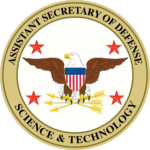Eligibility & Participation
Q1. Can graduate students participate?
A1. This is an undergraduate design competition. A graduate student can participate as a consultant. Expected effort will be from the undergraduates, but graduate students can help them.
Q2. Can international students at a UCAH member university participate?
A2. The consortium is open to Five Eyes (FVEY) countries: the United States, United Kingdom, Canada, Australia, and New Zealand.
Q3. I finished my undergrad in December 2025. Can I still participate?
A3. If you are a senior in Fall 2025, you may participate but need to be on a team that can continue work through 2026. You could transition into an advisor role afterward.
Q4. I’m not part of any university organizations or capstones. Can I still join?
A4. Your team must be from a member university. Each participant must go through the request to participate process. If you’re not an undergraduate and want to mentor, UCAH can help connect you to teams.
Q5. Is this limited to capstone projects or open to other formats?
A5. It’s open to a variety of formats, including capstone, semester projects, or independent study, as long as participants are government-approved UCAH members.
Q6. Is there a limit to how many teams a university can submit?
A6. No, there is no limit.
Q7. How does a student register, and do they need a team first? How do they find a faculty sponsor?
A7. Registration is through the UCAH Membership page: https://hypersonics.tamu.edu/membership/. For faculty connections, email [email protected].
Q8. Why is this competition limited to undergraduates instead of graduate students?
A8. The goal is to engage undergraduate students in hands-on hypersonics experience early in their careers. It supports workforce development at the technician-to-advanced-degree level.
Logistics & Timeline
Q9. Will the slides be shared?
A9. Yes.
Q10. What does our university need to include in the Notice of Intent (NOI)?
A10. The NOI lists interested participants (students & advisors), which UCAH will use to verify membership status and team size.
Q11. What’s the timeline for this effort, especially for teams not selected to continue?
A11. Universities have flexibility. Even if not selected, teams can continue based on their university’s curriculum decisions.
Q12. Will all presentations be virtual?
A12. Some, like semifinalist selections, will be virtual.
Q13. Will there be opportunities to interact with JHTO/UCAH?
A13. Likely not with JHTO. You may work with industry or lab partners. Avoid working with competition judges.
Q14. Is this a recurring competition?
A14. Yes, it will be recurring, with new topics each time.
Export Control & Security
Q15. Will the competition be treated as CUI?
A15. The design will not be CUI, but data from ground tests (e.g., ARL, CUBRC) will be CUI.
Q16. Is student design restricted (Distribution A) or CUI?
A16. The design is Distribution A. Ground test data may be CUI. Use university experts for guidance.
Q17. Can teams use ITAR-controlled design codes?
A17. Possibly, if your university ensures compliance with ITAR and curriculum rules. Consult with university experts.
Q18. Do projects involving control surfaces or ITAR materials require ITAR compliance?
A18. Possibly. If using ITAR-controlled prior work, your results may be ITAR. Consult university experts.
Q19. Can capstone presentations be made to broader audiences (non-cleared)?
A19. Yes, if content is Distribution A. Once data becomes CUI or export controlled, ensure audience is appropriate.
Technical Design Questions
Q20. What makes a design manufacturable in this context?
A20. It should be scalable, affordable, and simple. Consider complexity, materials, and fabrication feasibility.
Q21. What trajectory constraints exist?
A21. Teams can choose their own trajectory, with supporting analysis. At ARL, test flights cover a few hundred meters.
Q22. What’s the recommended team composition?
A22. Include students covering aerodynamics, heat transfer, materials, manufacturing, economics, flight dynamics, etc.
Q23. What are common pitfalls in submission?
A23. Starting too late, not validating tools, and narrowing design too early. Explore design space and iterate.
Q24. Can teams use university wind tunnels, and does that data become CUI?
A24. It depends on test conditions. Use university experts to determine if the data becomes CUI.
Q25. What’s the discrepancy between model size and launch model dimensions?
A25. Launch models are scaled down. CUBRC may test full scale, but some conditions require scaled testing.
Mentorship & Advising
Q26. How do teams find advisors or mentors?
A26. Use the UCAH website to find interest areas or ask UCAH for help at [email protected].
Funding & Resources
Q27. Will funding be provided to build or travel?
A27. JHTO will fund ARL/CUBRC for fabrication. Travel funding is under consideration, depending on availability.
Q28. Can teams build models at university facilities?
A28. Yes, but JHTO funding will not support university fabrication. ARL/CUBRC will build test models for winning teams.
Q29. Is there any other funding for teams?
A29. First-semester design costs are expected to be low. Schools and students may seek sponsors for other expenses.
Q30. Who pays for wind tunnel or ground test models?
A30. JHTO funds ARL/CUBRC to fabricate test articles for winning teams.


